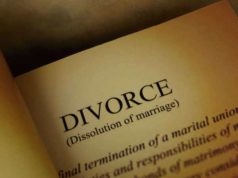
When divorce reform first began to take place in America, couples still had to have grounds for divorce.
In fact, spouses that wanted to file for divorce often could not obtain a legal divorce if there were no grounds for divorce.
In many instances, couples had to prove that one spouse was guilty of violating the marriage contract.
In fact, many couples took action to prove such accusations, in the absence of any fact.
Many times, couples would invent scenarios in which there was an appearance of a spousal violation of the marriage contract.
For example, spouses would make it appear that one spouse had been caught cheating when in fact, they had not done so.
It could be embarrassing for the ‘guilty’ spouse, but couples often had no choice. In order to avoid necessitating perjury, judges found it necessary to introduce a no-fault divorce.
No-fault divorce was granted in cases where couples simply could not live together happily. Couples could simply attest to the fact that there were irreconcilable differences.
In order to gain respect for the courtroom, judges sought to allow couples to divorce in the absence of inventing grounds for divorce.
No-fault divorces were meant to be utilized by couples that wished to remain amicable but simply did not wish to remain married.
By the early 1980s, no-fault divorces were legally allowed in almost every state.
While each state continues to have its own laws regarding no-fault divorces, the rules are generally quite liberal for couples that wish to end their marriage.
While couples can still utilize divorces in which there are grounds for divorce, most couples hope to avoid the court battles that generally ensue.
No-fault divorces allow couples to avoid lengthy legal battles which are generally about punishment based on accusations in the absence of fact.
In reality, many courts will award larger percentages of property and spousal support to ‘innocent’ spouses involved in contested divorces.
Whereas, no-fault divorces generally include a mutually beneficial distribution of marital assets. In fact, couples that take part in a no-fault divorce generally work together to come to their divorce agreement.
Many couples involved in a no-fault divorce are able to avoid spending large amounts of money on lawyer’s fees.
Also, no-fault divorces allow couples to avoid perjuring themselves in court, which would contribute to a false divorce record that would be available to the public.
In fact, no-fault divorces allow families to remain close together because of the lack of conflict involved in the divorce.
Divorces that can be granted in the absence of legal battles are often better for the involved family.
Primarily, children will not have to be brought into the courtroom; parents grow accustomed to working things out together, which will help them continue to raise their children in the best manner possible.
Before the no-fault divorce, spouses were sometimes unable to divorce unless they made false accusations against each other.
This was often difficult for couples and frequently led to feelings of guilt and depression. The advent of the no-fault divorce allowed couples to exercise their individual rights to divorce while interacting amicably.























